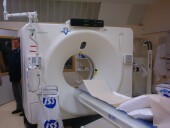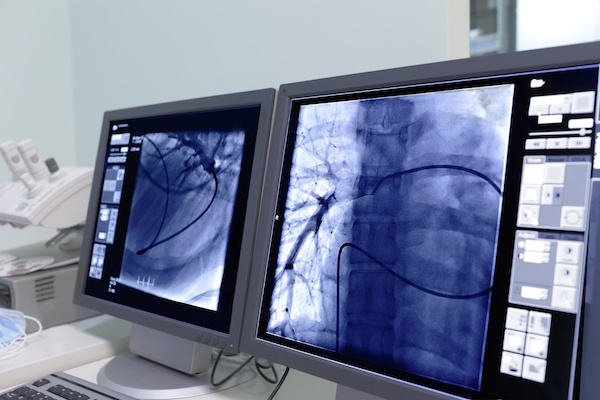
MONDAY, Aug. 24, 2015 (HealthDay News) — Children are receiving fewer CT scans now than a decade ago, dovetailing with a move to radiation-free MRI scans and ultrasounds, a recent study shows.
Though several reasons might explain the shift, the study’s lead author, Dr. Michelle Parker, said the underlying reason may be a push to limit youngsters’ exposure to radiation. “Over the time of our study, there has been a deliberate push to increase awareness of the potential harms of ionizing radiation,” said Parker, an assistant professor of pediatrics at the University of Cincinnati in Ohio.
CT scans, or computed tomography, use ionizing radiation, like X-rays, to provide detailed views of internal organs, soft tissue and blood vessels. Ionizing radiation has been linked to an increased cancer risk.
Neither MRIs nor ultrasounds involve radiation. MRIs use a large magnet to create images and have no known long-term risks, Parker said. Ultrasounds use soundwaves bounced off of fluids to make images of the body’s insides. Doctors are becoming more confident in these methods of imaging, the authors noted.
“This shift in imaging modalities is good news,” said Dr. Danelle Fisher, vice chairwoman of pediatrics at Providence Saint John’s Health Center in Santa Monica, Calif.
The findings are published online and in the September print issue of the journal Pediatrics.
For the study, researchers analyzed the records of more than 150,000 children admitted to 33 U.S. hospitals between 2004 and 2012. They calculated the rates of CT scans, ultrasounds and MRIs the children underwent for 10 different types of problems, including seizures, appendicitis, concussions, respiratory infections and abdominal pain.
Over those years, the use of imaging grew for children with nearly all symptoms and diagnoses studied. Only children with stomach flu or those having fluid drained from their brains did not undergo more imaging tests.
However, the proportion of each kind of test shifted during that time. The overall rate of CT scans dropped. Meanwhile, except for those with seizures or upper respiratory tract infections, the use of MRI or ultrasound increased.
Use of CT scans for seizures dropped by almost half, and 10 percent fewer MRIs were used for children having seizures. Children with severe head trauma also saw a big drop in CT scan use.
Overall, the most common reasons children received CT scans included seizures, the procedure to drain excess fluid from the brain, removal of the appendix and brain surgery, a concussion or another head injury, the findings showed.
The use of ultrasounds increased most for appendix removal and stomach bugs, according to the report.
Another reason for the drop in CT scans could be that hospitals are making more use of evidence-based guidelines, said Dr. Clay Jones, a neonatal hospitalist at Newton-Wellesley Hospital in Newton, Mass. The guidelines, based on available research, detail best practices for patient care.
“Recent studies have highlighted the effectiveness of imaging techniques that don’t rely on ionizing radiation for a variety of conditions, such as abdominal pain and pneumonia,” Jones said. “Parents and caregivers have also become more aware of the potential risks associated with imaging, and I frequently have parents express concerns regarding radiation exposure.”
But determining which imaging to use is not always a simple decision, Jones said. For example, MRIs take longer and can sometimes require a child to be sedated, he said.
“Ultrasound requires a particular skill set as children are not simply small adults,” Jones added. “If an inexperienced ultrasound technician and radiologist are the only option when facing a child with possible appendicitis, for example, then a CT scan might be a better option because it is less subjective.”
Many conditions would require a CT scan, Jones explained, primarily when doctors need to look for an injury or infection deep within the body for something urgent.
“Often it really is the best imaging technique and the benefits far outweigh the small risk of potential cancer decades later,” Jones said. “A classic example in pediatrics would be a young child with signs of bleeding within the brain or dangerously increased intracranial pressure, such as occurs with accidental or abusive head trauma.”
In some cases, skipping a CT scan due to concerns about side effects may mean missing the cause of a problem, leading to serious immediate problems or even death, Jones said.
Parker pointed out that “there is no one-size-fits-all answer, as there are conditions where no imaging may be required, and others where CT scan is still the imaging modality of choice and may be unavoidable. However, families should always be sure they understand what their health care provider is recommending and what the risks and benefits are.”
More information
Learn more about ionizing radiation exposure to children at the U.S. Centers for Disease Control and Prevention.
Copyright © 2025 HealthDay. All rights reserved.

